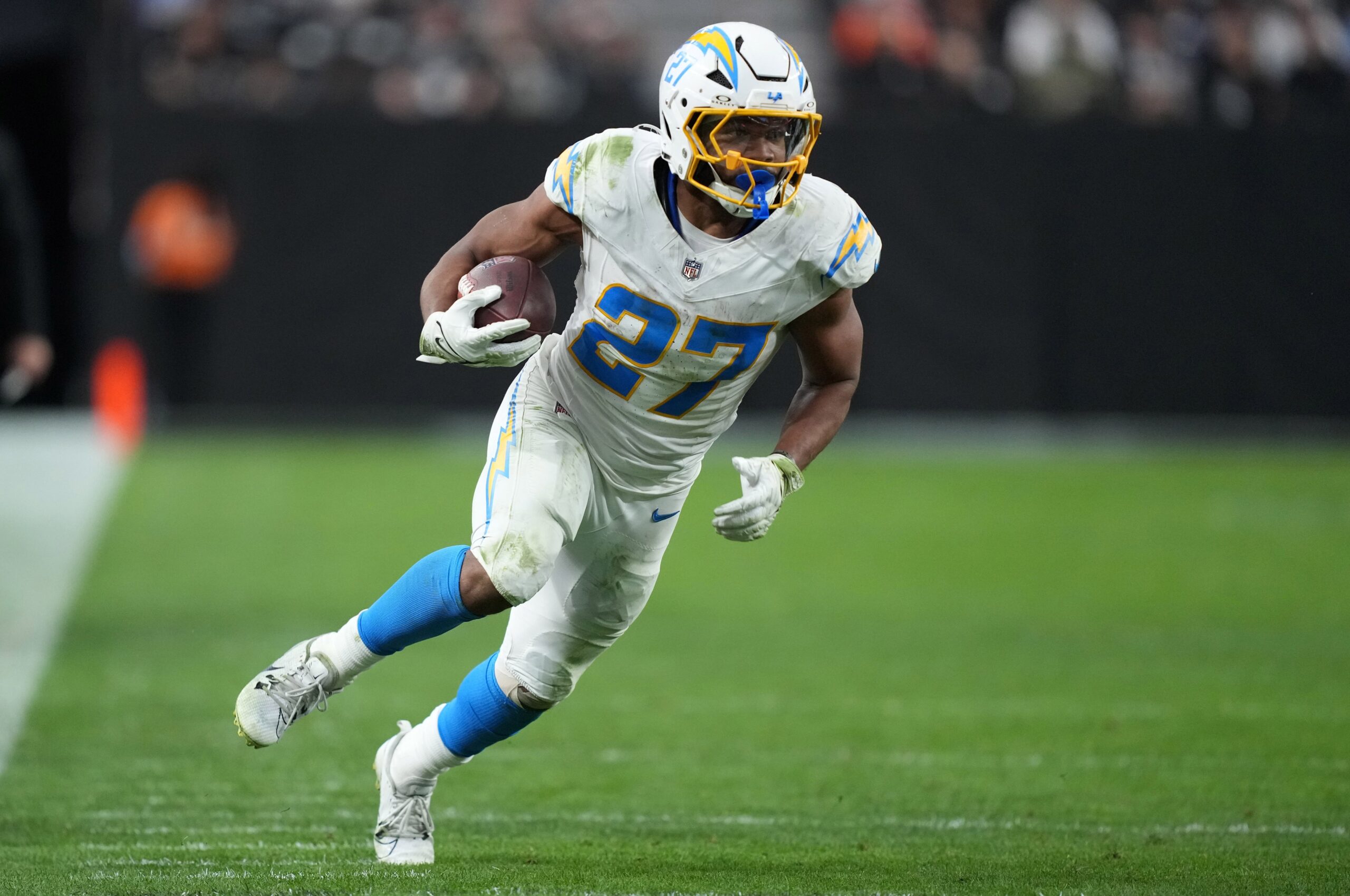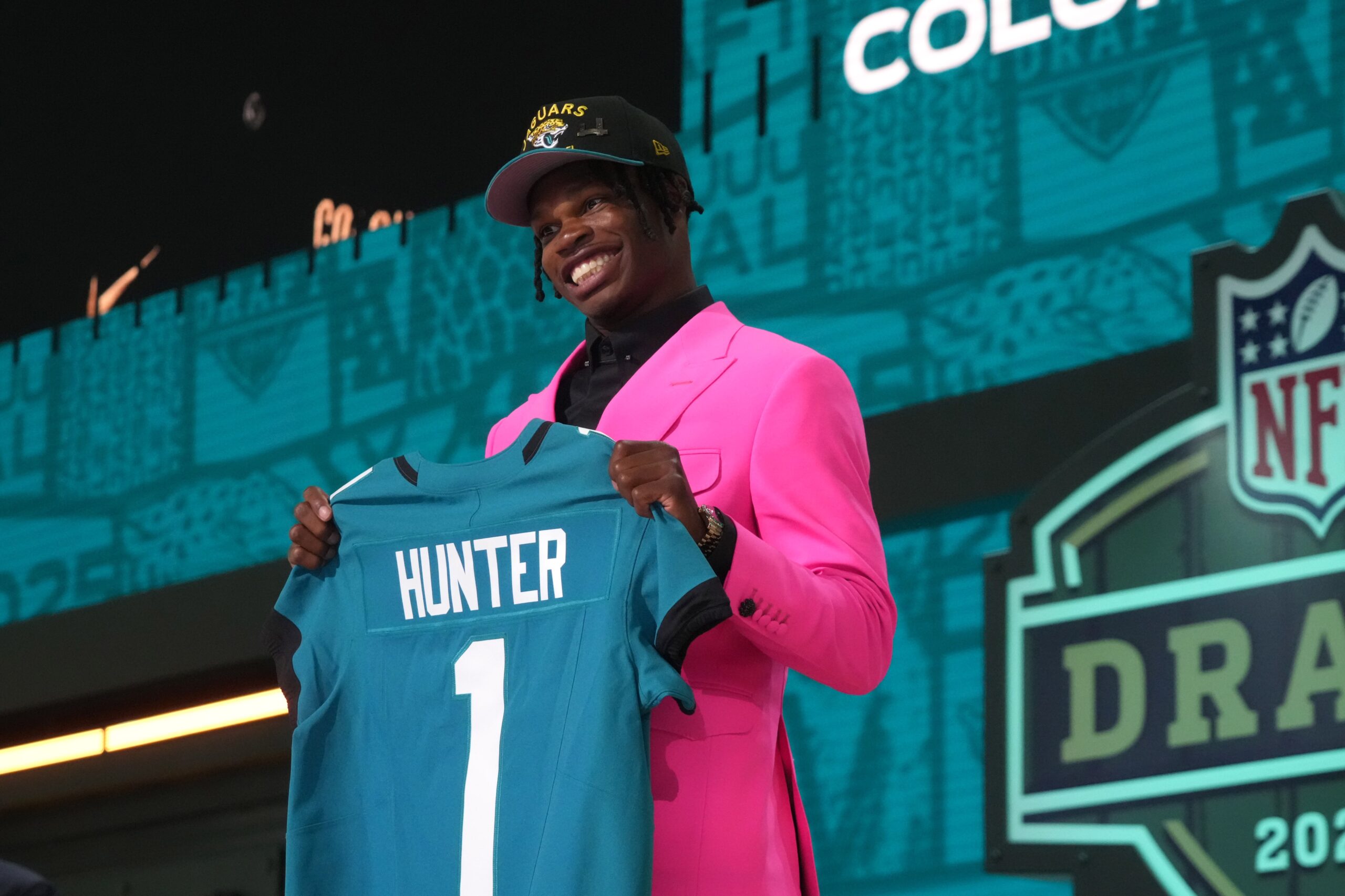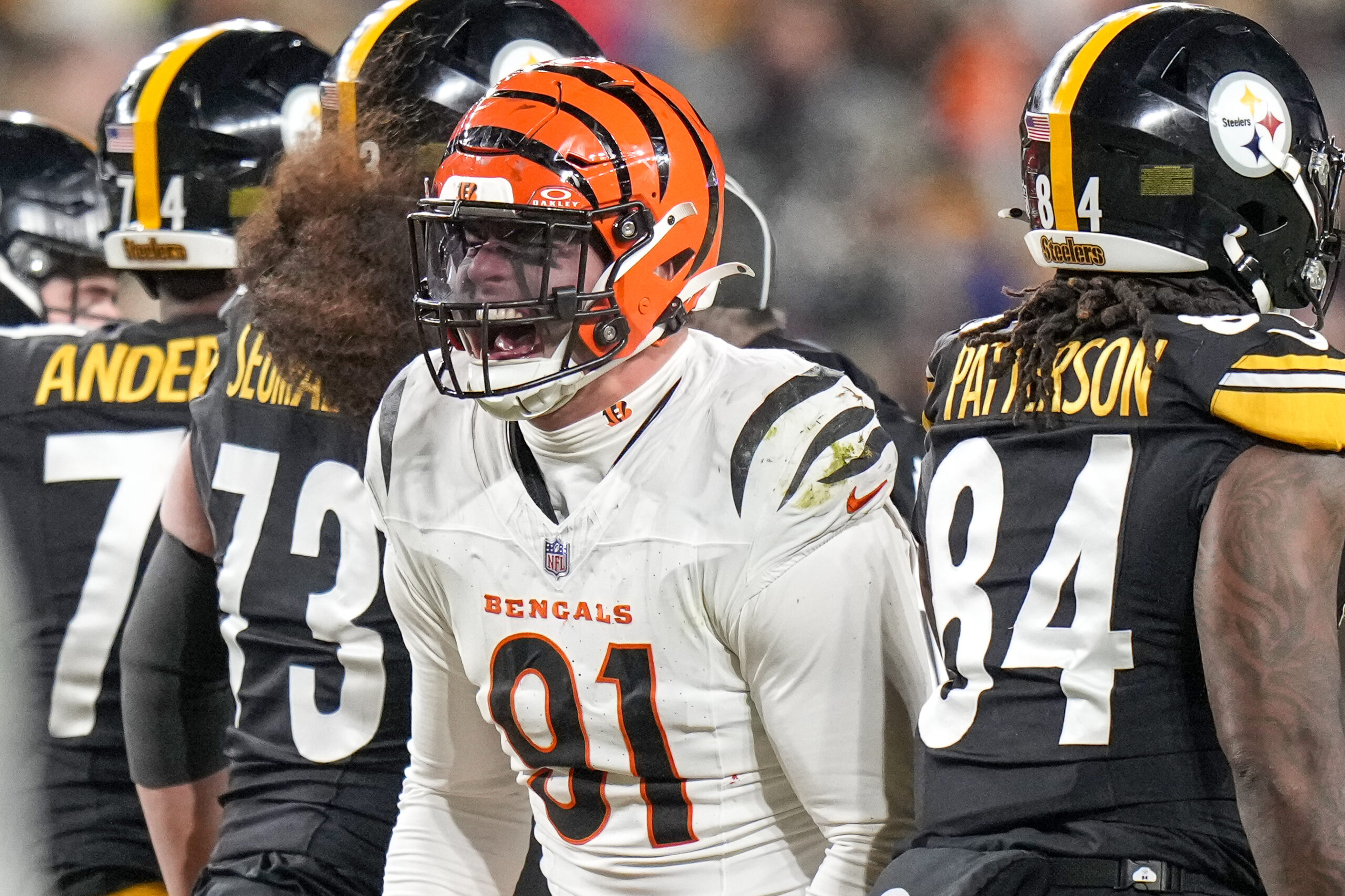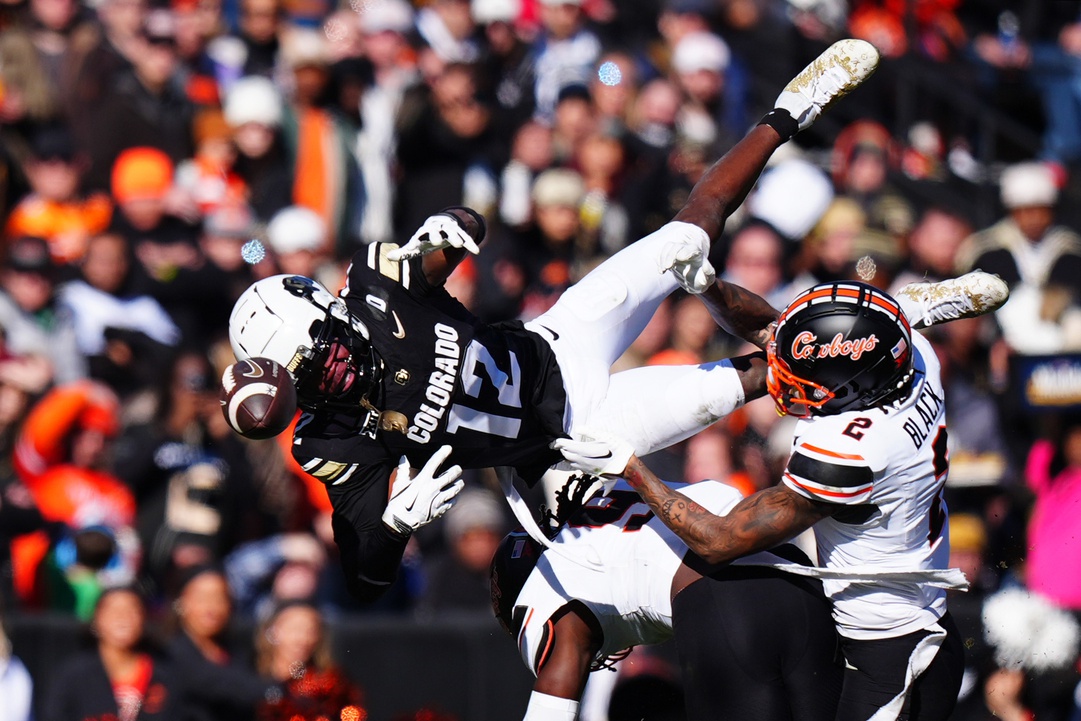NFL Analysis
1/20/25
21 min read
1st & 10: How 2025 NFL Divisional Round Games Were Won
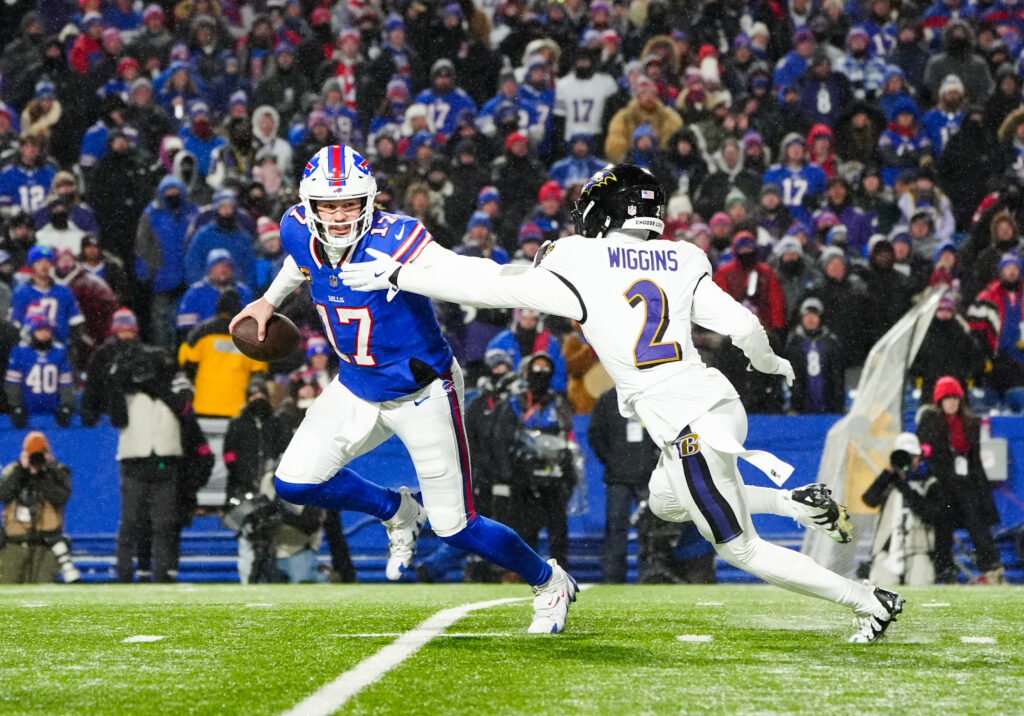
Many consider the NFL Divisional Round the best football weekend of the year. Whether you think that or not, it did not disappoint. Just four teams remain. This week's 1st & 10 looks at how we got there and what's next for the four teams that won't be playing for a shot at the Super Bowl next week.
Each week, 1st & 10 will bring you a Monday morning in-depth breakdown of everything you need to know from Sunday’s slate of games. We’ll fill this column with stats, film, and plenty of words to keep you covered on anything you might have missed or want to dive deeper into from Sunday.
All stats provided by TruMedia unless noted otherwise
1st & 10 NFL Divisional Round
1. Buffalo Beats Baltimore
The closeness of this game was what we all expected. How it got there? Not so much. The Buffalo Bills beat the Baltimore Ravens 27-25 with a failed 2-point conversion to end it, while Josh Allen only threw for 127 yards.
This is the game the Bills have been building toward with the run game. Last week, the Bills went big to run through an undersized Broncos front. But against the Ravens, the Bills were just able to consistently find holes in the defense thanks to great blocking up front.
Buffalo used six offensive linemen on 22 percent of plays again but averaged negative EPA with the same number of stuffs as runs that gained at least 10 yards.
Instead, the Bills just had a consistent rushing offense that couldn’t be stopped. Buffalo came out in 11 personnel on 69.5 percent of plays, and that kept the Baltimore defense spread out enough to leave space around the line of scrimmage. The Bills only averaged 1.26 yards before contact per rush from 11 personnel runs, which would have ranked 26th during the regular season, but they had a 69.6 percent rushing success rate on those runs.
Overall, the Bills had a 57.7 percent success rate on running back carries, their second-best rate for a playoff game with Allen at quarterback.
Bills RB Success Rates In Playoffs With Josh Allen (per TruMedia)
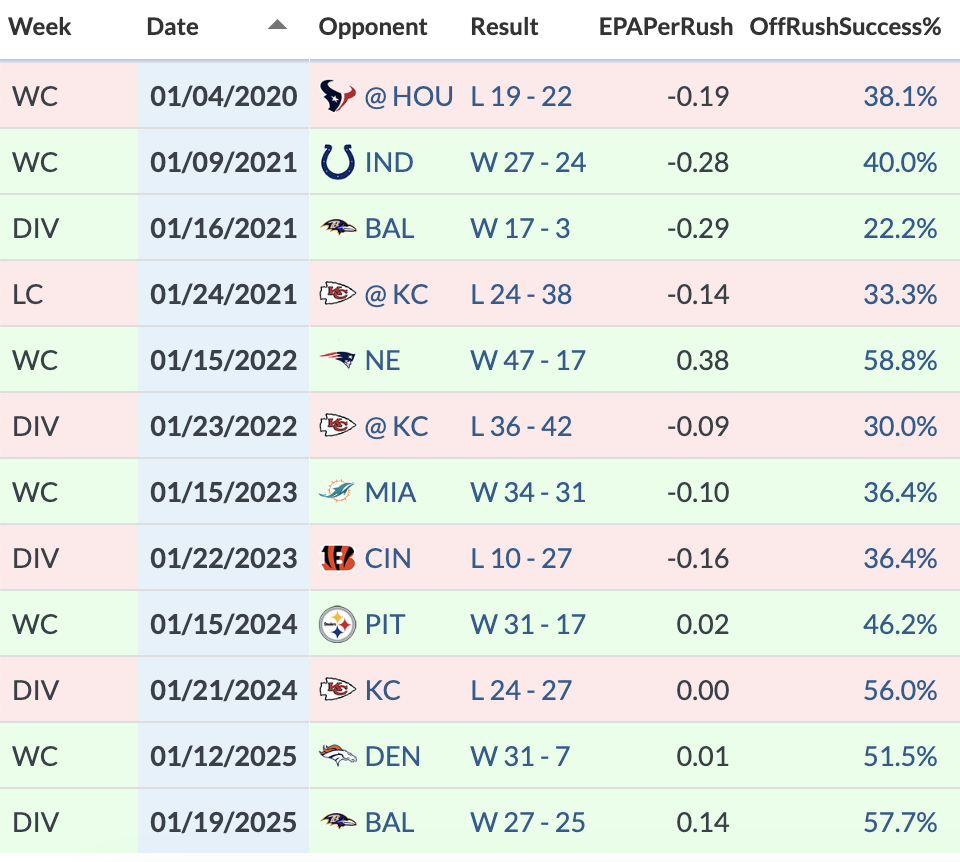
This week and last week are the only two playoff games of the Josh Allen era with a pass rate under 50 percent. Of course, Allen played a big part in the running game with 10 carries and two touchdowns.
As a thrower, Allen had just a 2.9-yard average depth of target, and 40.9 percent of his throws were at or behind the line of scrimmage. But Allen routinely made the smart play and by getting the ball out in 2.29 seconds on average, it prevented the Ravens from getting pressure.
The “smart play” also included Allen not falling for his instincts of wanting to do too much. On a run on third-and-goal late in the fourth quarter, Allen got stuffed. His eyes lit up as the chance to pitch the ball occurred to him, but he held on, and the Bills settled for a field goal.
Defensively, the Bills disrupted Lamar Jackson early and forced the Ravens to play catch-up for much of the game. Jackson had a bad fumble early and threw an interception due to a miscommunication with Rashod Bateman, both of which came on Buffalo blitzes.
The Bills blitzed Jackson on 35.5 percent of his dropbacks — their second-highest rate of the season behind a 40 percent rate against Drake Maye and the New England Patriots — and against those blitzes, Jackson was pressured 63.6 percent of the time, including a 100 percent pressure rate on five first-half blitzes. Jackson averaged -1.56 EPA per play against the blitz.
Despite the turnovers, Jackson still finished the game with an 85.8 QBR, meaning a team would be expected to win about 85 percent of the time with a performance equal to Jackson’s.
Jackson didn’t have many places to go in the first half because of how the Bills played him. There was the heavy blitz, but Buffalo also often used a spy with Matt Milano waiting for Jackson to make a move outside of the pocket. It’s possible the Ravens knew that going in and wanted to waste Milano on passing plays because Jackson did not have a single designed rush in the game.
In the second half, Jackson bounced back and could have led a comeback if not for two big mistakes made by Mark Andrews.
Lamar Jackson Splits By Half vs BUF (per TruMedia)
| Half | EPA/Play | Success% | aDOT | YPA | Comp% | Blitz% | Pressure% | Press To Sack% | Scrmbl% |
| First | -0.03 | 41.20% | 14.1 | 12.3 | 60.0% | 33.3% | 60.0% | 22.2% | 20.0% |
| Second | 0.20 | 43.80% | 7.9 | 8.7 | 80.0% | 37.5% | 31.3% | 0.0% | 6.3% |
Early in the fourth quarter, Andrews fumbled while trying to avoid a tackle attempt by Terrell Bernard, but Bernard knocked the ball out and recovered it, which led to a Bills field goal.
Then, Jackson led the Ravens down the field for a touchdown on a final drive in which he went 7-fo-8 for 80 yards — 0.82 EPA per play while pressured on half of those plays.
Baltimore had a chance to tie the game with a 2-point conversion, but Andrews dropped the pass.
It was tough for Baltimore to fall short after finishing first in DVOA during the regular season, but Buffalo’s complete all-around performance made the margin for error small, and Baltimore’s mistakes were too much to overcome.
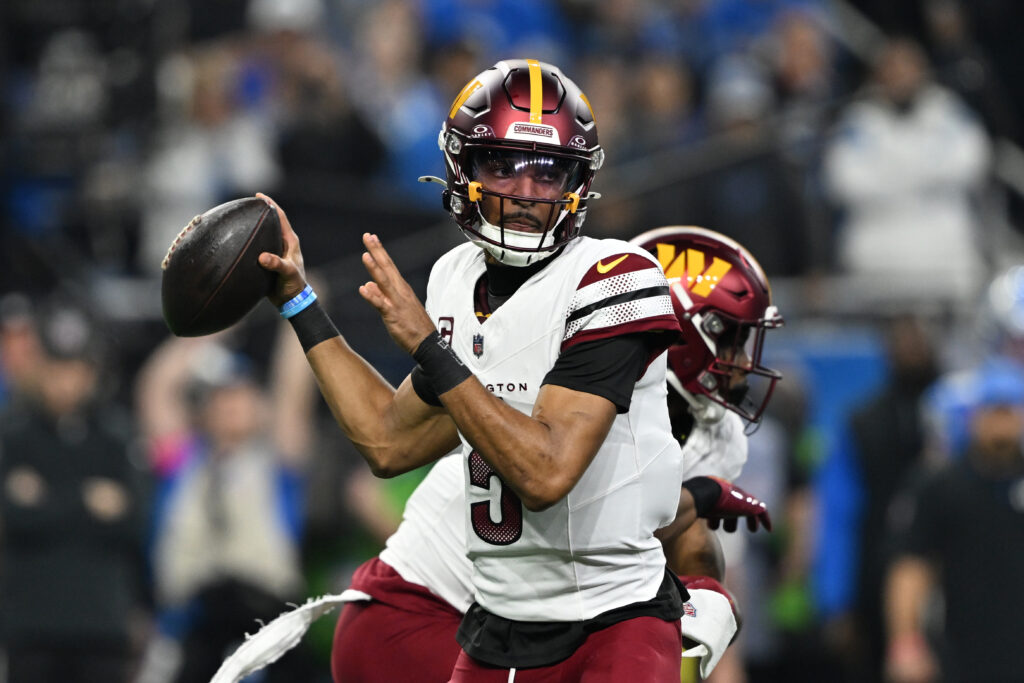
2. No Pressure For Jayden Daniels
Last season, the Washington Commanders were 4-13 and 31st in DVOA. A year later, they’re headed to the NFC Championship Game.
Washington survived a shootout against the No. 1 seed Detroit Lions and came away with a 45-31 victory. Jayden Daniels and Kliff Kingsbury have grown together all season, slowly building and adding to each performance, and this game was the ideal, fully-formed version of what this duo could do together.
Daniels averaged 0.38 EPA per play, easily the highest mark in the Divisional Round, and was in control of the entire game.
Much of Washington’s offense came on quick-hitting passes, either screens or RPOs, that put the Lions in conflict no matter what they tried to do. Knowing the blitz was likely to come against an aggressive defense, Daniels averaged 2.26 seconds to throw. That was his quickest average of the season, with only the season opener under 2.4 seconds.
Daniels was blitzed on 43.2 percent of his dropbacks and pressured on 35.1 percent but did not take a sack and was only hit twice. When pressured, Daniels averaged 0.51 EPA per play. He was the only quarterback to have positive EPA per play under pressure in the divisional round, and he’s now averaged 0.54 and 0.51 EPR per play in his two playoff games.
Among quarterbacks with at least 10 plays under pressure, the only game better than Daniels’ two this season since 2020 came from Patrick Mahomes in the 2021 Divisional Round against the Bills.
Best EPA/Play Under Pressure In Playoff Game Since 2020 (Per TruMedia)
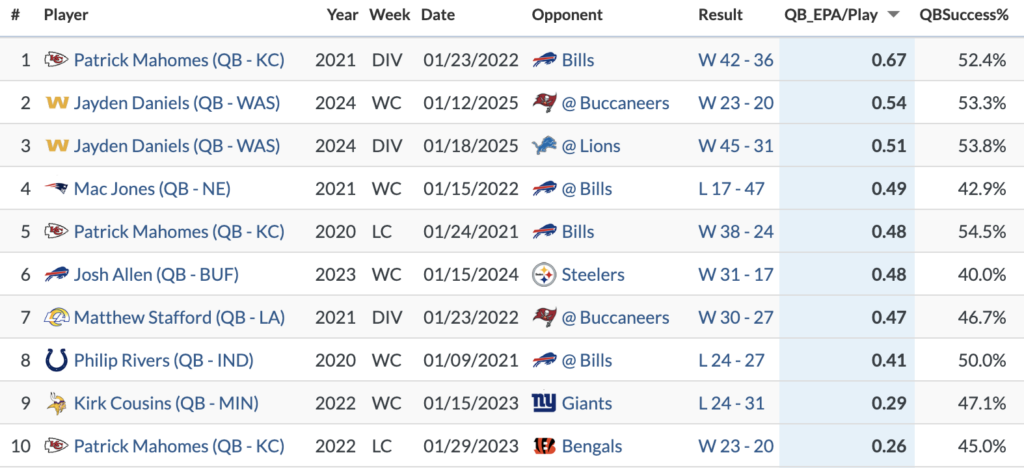
Washington appeared to have an answer for everything. The Commanders would go trips to one side with a screen, have a handoff option, and let Daniels keep. That simple Air Raid staple worked in a number of ways. On the 58-yard Terry McLaurin touchdown, Washington got a 3-on-2 out of a bunch alignment against a Brian Branch blitz.
— Dan's Clips (@dansfilmclips) January 20, 2025
The Commanders compounded those types of plays with speed to the line of scrimmage. Washington went no-huddle on 47.9 percent of plays against Detroit. On those plays, the Commanders averaged 7.1 yards per play.
Going no-huddle has been a Kliff Kingsbury staple, as the Commanders led the league at 61.5 percent in the regular season, but this version was different. Kingsbury used to use no-huddle as the lone aspect of defensive manipulation—his Arizona offenses would go fast but run the same plays from the same formations—but now it’s just a small piece, with the offensive looks changing from play to play.
Kingsbury has been a revelation as a play-caller and designer this season. That might have been the most evident on Washington’s fourth-down attempts in this game. The Commanders went 3-of-4 on fourth down, and Kingsbury had an easy, open answer for each one from three different looks.
— Dan's Clips (@dansfilmclips) January 20, 2025
There might not have been any stopping Washington, but getting five takeaways on defense certainly helped the offense, although it didn’t lead to short fields, as the Commanders still had the second-worst starting field position of the weekend.
While pressure didn’t get to Daniels, it did impact Jared Goff. Goff was pressured on half of his dropbacks, and on those plays, he averaged -0.59 EPA per play with two sacks and two interceptions.
Jared Goff Pressure Splits vs WAS (per TruMedia)
| Pressured | Dropback | EPA/Play | Success% | YPA | aDOT | Comp% | Inaccurate% | Avg Time To Throw |
| Yes | 20 | -0.59 | 40.0% | 6.3 | 8.9 | 44.4% | 27.8% | 3.27 |
| No | 20 | 0.63 | 69.6% | 9.0 | 7.8 | 68.2% | 4.5% | 2.69 |
Detroit was still successful on offense — it had a weekend-high 56 percent success rate — but between Washington’s offensive pace and the turnovers, the Lions weren’t able to get into their game. Jahmyr Gibbs looked explosive any time he touched the ball, but the Lions couldn’t rely on the ground game as they trailed.
Despite the turnovers, Goff still managed positive EPA per play and a 55.8 percent success rate. The Lions had their chances, but it’s hard to win with so many turnovers.
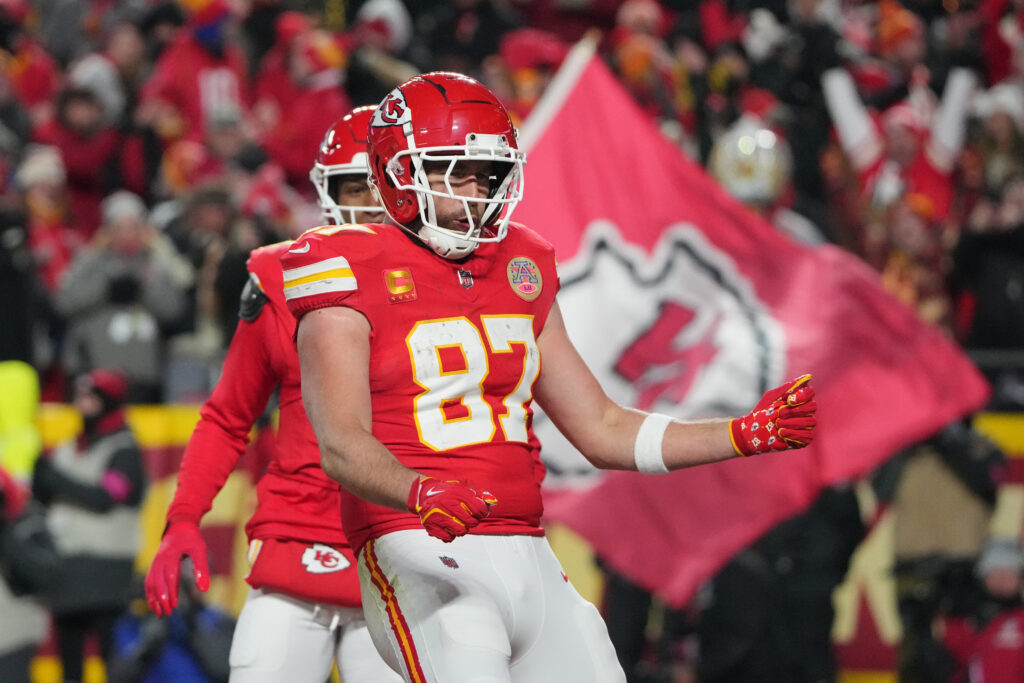
3. The Chiefs Keep Winning (Playoff Version)
The Kansas City Chiefs are back in the AFC Championship Game for the seventh straight season. In some ways, the 23-14 win against the Houston Texans was the team we expected to see, but still left some things to be desired.
This was not a particularly productive day for Patrick Mahomes and the Kansas City offense. Travis Kelce went into playoff mode and had 117 yards with a touchdown, but Mahomes only threw for 177 yards.
Despite the win, Mahomes had his lowest career success rate in a playoff game.

There are still some struggles from down to down, and the Chiefs didn’t have much desire to test the outsides, where they did not have the advantage with their receivers against Derek Stingley Jr. and Kamari Lassiter.
Instead, the Chiefs targeted the middle of the field and targeted the linebackers, which was enough to spring Kelce free on a few plays. Barely any throws went outside the numbers, just four that traveled beyond the line of scrimmage. But between the numbers, Mahomes went 10-of-13 for 112 yards and a touchdown.
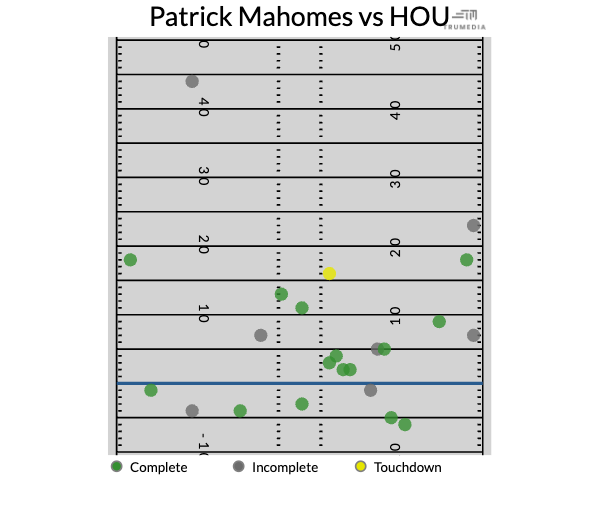
Houston was not bad at defending passes down the middle during the regular season (seventh in DVOA), but Kansas City did just enough with Kelce to create big plays when needed.
Those plays were necessary because the Chiefs struggled to keep the ball moving. Mahomes was pressured on 46.9 percent of his dropbacks despite working to get the ball out quickly and averaging 2.52 seconds to throw. The Chiefs decided to keep Joe Thueny at left tackle instead of moving him back to guard, which left Kansas City a bit vulnerable on the edges.
— Dan's Clips (@dansfilmclips) January 20, 2025
Yet, even in lackluster Mahomes games, he’s still going to do something incredible if given the chance, and that was his touchdown throw to Kelce while getting taken down.
But this was a game about the pressure Kansas City created on defense. The Texans moved the ball, but C.J. Stroud was sacked eight times. He was pressured on 53.7 percent of his dropbacks, and the Chiefs were consistently able to get free rushers to the quarterback. According to Next Gen Stats, the Chiefs created eight unblocked pressures on their 17 blitzes.
Pass blocking and exploiting their protection rules have been issues for Houston all season, and that’s often given Stroud so much trouble. Outside of the sacks, Stroud played well and still finished with the second-highest EPA per play among quarterbacks this weekend (0.09), but it’s so hard to overcome the negative plays and lost yardage on all of the sacks without good answers built into the offense.
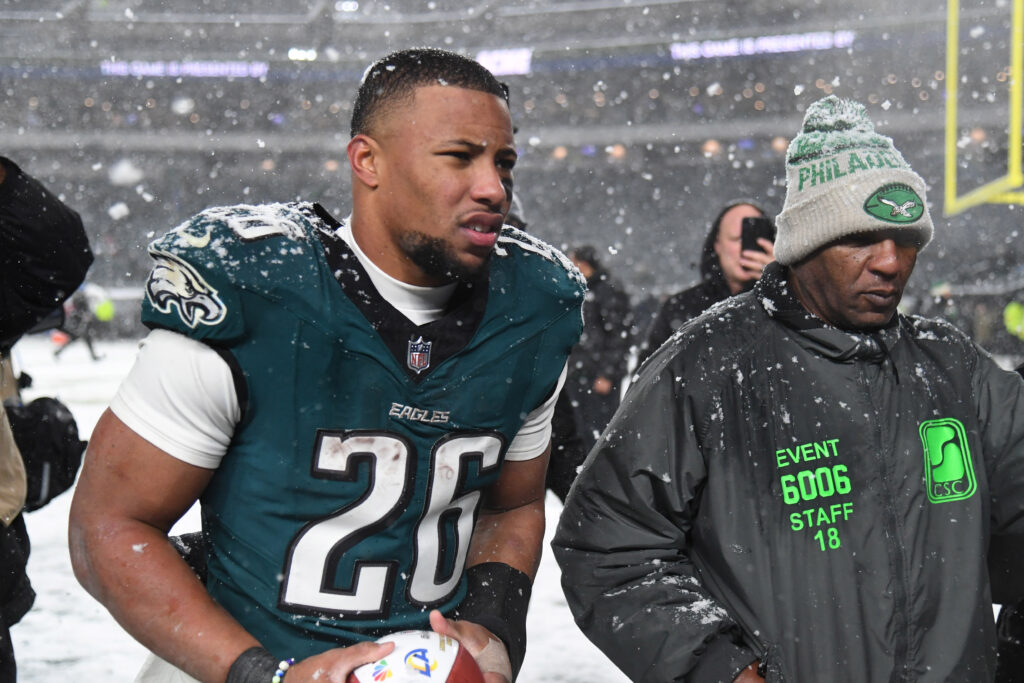
4. The Eagles Pull It Out In The Snow
Let the Philadelphia Eagles hang around long enough, and a big play is bound to happen. That’s been the story of Philadelphia’s 2024 season, and it held for the 28-22 win against the Los Angeles Rams.
For the second playoff game in a row, the Eagles' passing game did not look good. Jalen Hurts finished with the lowest EPA per play among quarterbacks this weekend at -0.13 — the only quarterback with negative EPA — while the Eagles managed just 65 net passing yards.
Hurts was slow to process under pressure, and the Rams mixed up blitzes and sim pressures to get to the quarterback.
The Rams ran a simple stunt that dropped a lineman from the left side of the offense to create a free rusher. It worked for the sack on an attempted Hail Mary at the end of the first half and then resulted in a safety in the second half.
Philadelphia was even mostly held in check in the run game. Saquon Barkley only had a 34.6 percent success rate and was stuffed on 19.1 percent of his attempts. But when runs broke through, they broke through. Barkley had a 62-yard run in the first quarter through a wide-open hole created by Mekhi Becton.
Hurts opened the scoring on the ground with a keeper that went behind a hole so big Jordan Mailata led the way through it and had no one to block.
With under five minutes remaining in the fourth quarter, Barkley ripped off a 78-yard touchdown run.
His two touchdown runs were his only carries that went more than 10 yards. Per Next Gen Stats, Barkley only averaged 3.4 yards per carry on carries between the tackles.
Philadelphia’s defense benefited from forcing a few turnovers, partly due to the snowy conditions at Lincoln Financial Field. After the safety, Jalen Carter punched the ball out from Kyren Williams, which set up an Eagles field goal. Then, on the next drive, Nolan Smith knocked the ball away from Stafford on a strip-sack that set up another field goal to give the Eagles a 22-15 lead.
Carter was excellent in this game. He played on 68 of Philadelphia’s 70 defensive plays, and according to Next Gen Stats, he was double-teamed on 26 of his 49 pass rush snaps (53 percent).
He had a sack on a third-and-2 on the Rams’ final drive while attempting to tie the game. Carter faked a stunt outside to get the center to look away and then swam back inside for an unblocked sack.
Then, he had a pressure on the fourth down that went incomplete and clinched the game for the Eagles.
The Eagles' talent has been overwhelming all season. Not every player has to be on, and not everything worked for Philadelphia on Sunday, but there’s always going to be someone on the brink of going off. The Barkley runs and Carter pressures were enough, and now the Eagles are on the brink of another Super Bowl appearance.
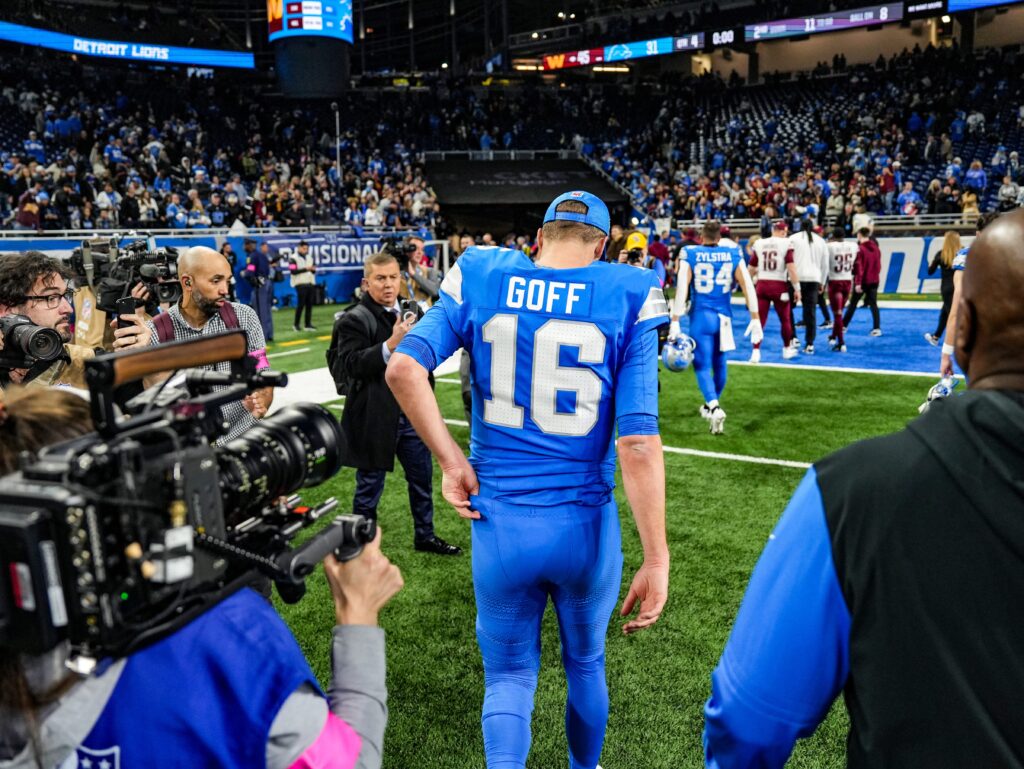
5. What's Next for the Lions?
Last season, Dan Campbell stood at the podium following the loss in the NFC Championship Game and said he had just told his team there was no guarantee they’d be back. Throughout the course of the season, it looked like there would be nothing but a guarantee that the Detroit Lions would be back with a chance to play for the Super Bowl. It was Detroit’s time.
But now, the Lions' entire future outlook is murky. After the team got both coordinators to return last season, Ben Johnson and Aaron Glenn are expected to be hired as head coaches this offseason.
While Dan Campbell is rightfully a big presence, the coordinators feel so important for the Lions, especially given how the talent was distributed this season. The defense fell apart with injuries, but Aaron Glenn kept this unit in the top 10 by EPA per play. The fact that Goff finished with positive EPA despite his individual performance highlights how important the offensive structure is and how many answers are there on every play.
Depending on the coordinators, the Lions aren’t in immediate danger of falling off a cliff. They still have $57 million in cap space with few key contributors departing. Still, things do get tough quickly. Goff’s contract jumps to a $69 million cap hit in 2026, so the Lions need a clear picture of what the future looks like by then.
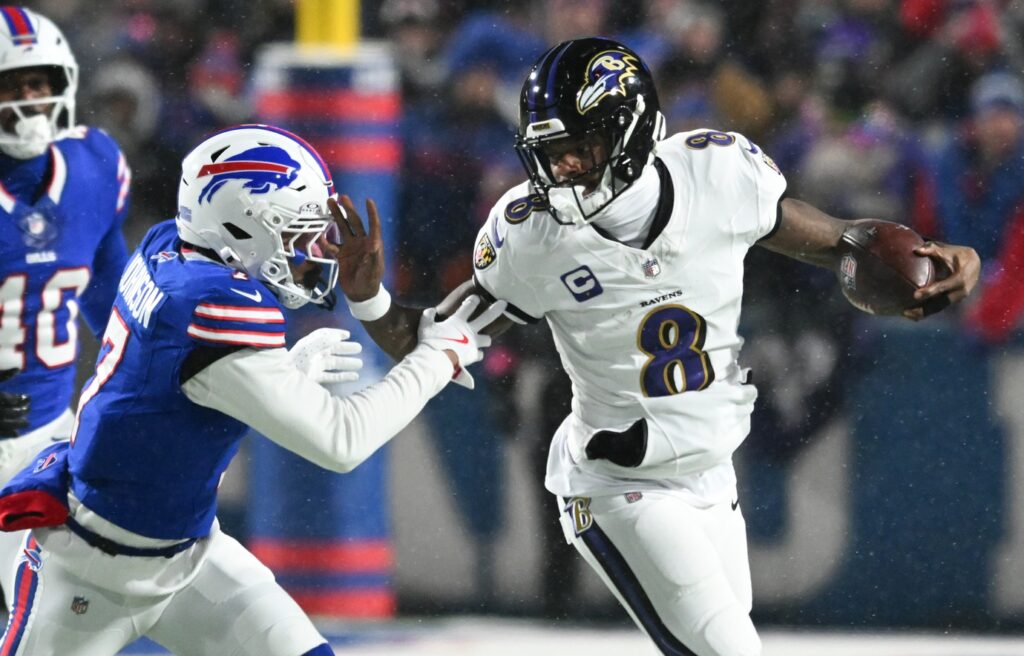
6. Will The Ravens Ever Get Over The Hump?
Despite being disappointed with a Divisional Round exit, this feels like a much different playoff end than previous seasons in Baltimore. There wasn’t some fatal flaw that sent the Ravens home, no exploitable shortcoming.
Sure, the mistakes are frustrating and occasionally too common, but it’s not as if this team was shut down. In fact, Baltimore had the highest yards per play differential in a playoff loss for any team since 2000.
Highest Yards Per Play Differential In Playoff Loss Since 2000 (per TruMedia)
| Team | Opponent | Season | Round | Result | YPP Diff. |
| Ravens | Bills | 2024 | DIV | L 25 - 27 | 2.67 |
| Patriots | Broncos | 2005 | DIV | L 13 - 27 | 2.60 |
| 49ers | Ravens | 2012 | SB | L 31 - 34 | 2.56 |
| Seahawks | Patriots | 2014 | SB | L 24 - 28 | 2.24 |
| Steelers | Broncos | 2015 | DIV | L 16 - 23 | 2.15 |
| Cardinals | Steelers | 2008 | SB | L 23 - 27 | 2.11 |
This is a team that was first in DVOA for much of the season and will bring most players back this offseason with a few holes in need of upgrading. A true big, ball-winning receiver could help, but even without that, the Ravens should be back in a similar spot next season.
Defensive improvement during the second half of the season doesn’t guarantee to translate into the next season, but it seems like something was figured out for first-year defensive coordinator Zach Orr midway through the year. The offense could be better in Year 3 under Todd Monken if he returns. Baltimore still has what will be a three-time MVP at quarterback.
It’s not time to worry, overreact, or disparage what this team did in the 2024 season.
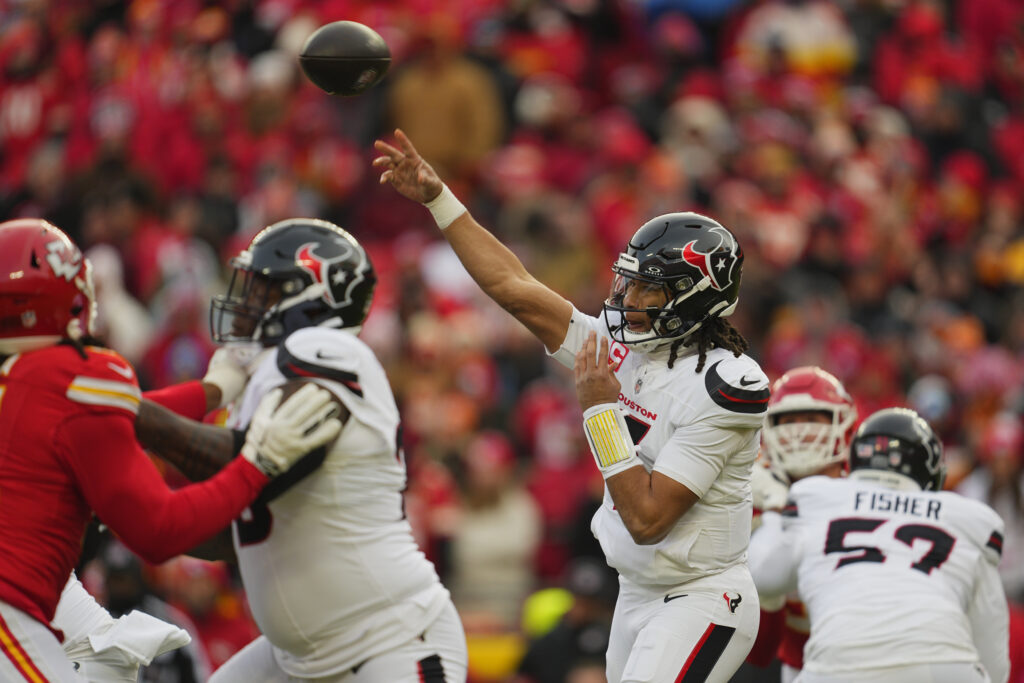
7. How close are the Texans?
It’s been a frustrating year for the Houston Texans, but that could bring optimism for the future. This team, despite its flaws, easily won its division, won a playoff game as a home underdog, and had some success against the Chiefs.
Houston is still one of the younger teams in the league (11th-youngest by snap-weighted age), and under DeMeco Ryans, should continue to have one of the league’s best defenses — especially with stars at both cornerback spots and both edges.
However, the Texans have to have an honest conversation about what they want to be on offense and whether this current path is the way to go. After an exciting first season, everything about the offense regressed in Year 2, and no changes were made to adjust throughout the year. The offensive line struggles and protection issues loomed throughout the year and into the loss to Kansas City.
In addition to fixing issues, the Texans could look vastly different from what they expected this season. Stefon Diggs is a free agent after re-negotiating his contract in the offseason, and he’s recovering from a midseason torn ACL. Tank Dell suffered his knee injury in late December, so his status is not guaranteed for 2025.
Nico Collins is a star at the position. What Stroud did from the second half of the Chargers game through the Chiefs game should give optimism that he can still work through bad situations, but it should be imperative not to put him in a situation that resembles this 2024 offense again.
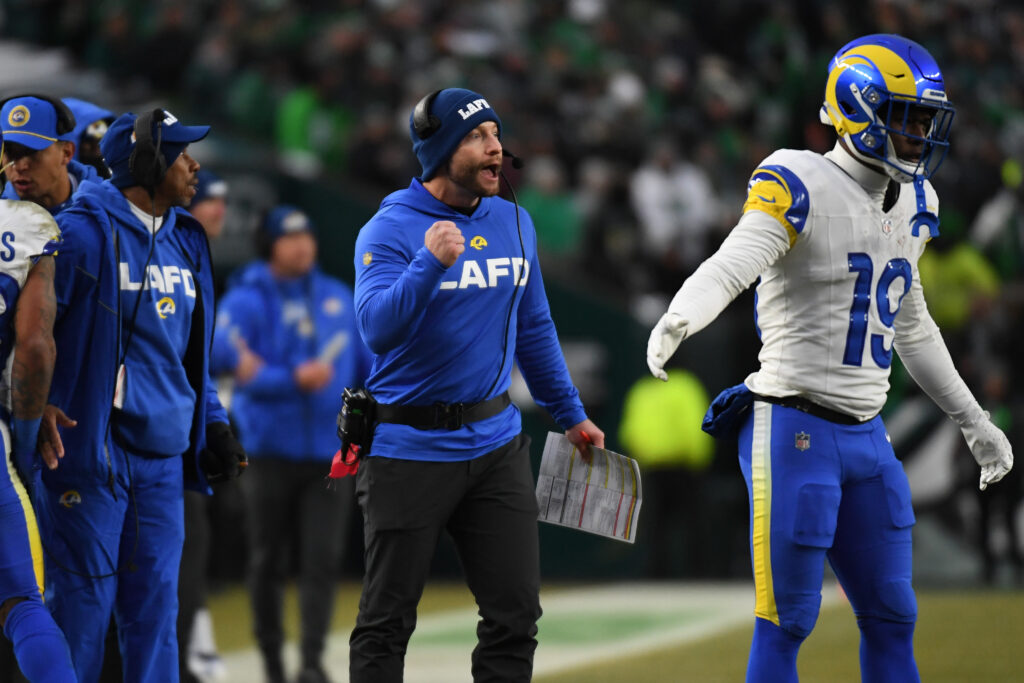
8. Is This It For The Rams?
The Los Angeles Rams weren’t supposed to be here. They started the season 1-4 and were expected to finally crash out after loading up on so many short-term veterans for their Super Bowl run and cutting ties with many before the season.
But the Rams showed their best play can hang with anyone. Even against the Eagles, Matthew Stafford nearly led a comeback, which included an insane throw and catch to Puka Nacua on the final drive.
The question is if this version of the Rams will continue. Los Angeles filled the defense with young stars, hitting on Jared Verse and Braden Fiske in the draft to add to Kobie Turner. That pass rush came on in the second half of the season. Cornerback is still an issue, and this team really could have used a linebacker like Ernest Jones all year, but there’s a positive outlook on the defense.
Stafford will turn 37 in February and will take some time to think about his future. After the game, he said he still felt like he had something left in the tank.
The Rams are set up fairly well, with $46 million in cap space, and Stafford accounts for a $50 million cap hit.
Thanks to Verse and Fiske, the Rams have already gotten a head start on getting younger, and they have a chance to keep building for the future while giving it one more go with Stafford if he returns in 2025.

9. How Commanders-Eagles matched up in the regular season
Washington and Philadelphia played twice in the regular season as divisional rivals and went 1-1 in those games. In the first meeting during Week 11, the Eagles won 26-18 with 434 yards of offense. The Commanders won the second meeting in Week 16, 36-33, despite five turnovers, while Kenny Pickett played most of the game for the Eagles.
The first meeting was in the middle of Washington’s three-game losing streak as the offense faded while Jayden Daniels was recovering from his rib injury. In the second game, Daniels threw two interceptions but still averaged 0.31 EPA per play.
In two games against Washington, Saquon Barkley ran 55 times for 296 yards and four touchdowns.
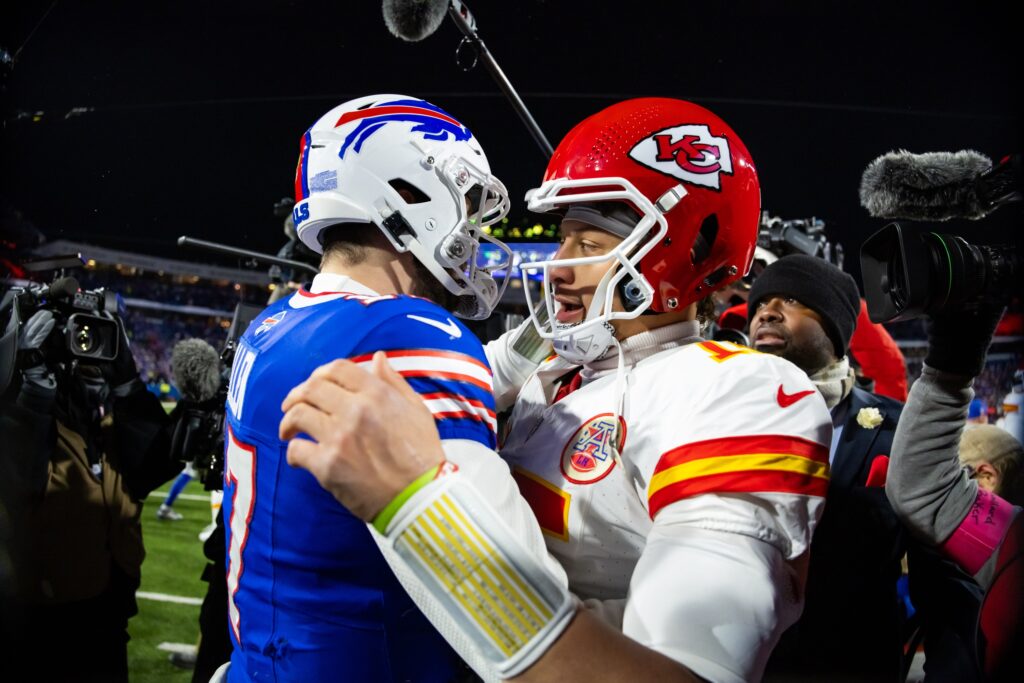
10. We're Getting Bills-Chiefs Again
When the Bills and Chiefs met in Week 11, it was assumed they would meet again in the postseason. Now, for the fourth time in five seasons, we’ll get this matchup.
In the regular season meeting, the Bills won 30-21. Here’s what we wrote in 1st & 10 from that game about how Buffalo adjusted in that game:
Part of how the Bills did this was by playing their game, especially on defense, and not allowing the Chiefs to dictate the terms of play. Kansas City has been playing in heavier personnel and forcing defenses to make a decision of how to play it with either an extra linebacker or staying in nickel.
The Chiefs have gotten teams to defend them in base personnel on 20 percent of their snaps through Week 10, and Kansas City has a 57.1 percent pass success rate while doing so. The Bills are a nickel defense, and they stuck with that as Buffalo did not play a single snap in base against the Chiefs, even though Kansas City played in 12 personnel on 42.6 percent of their snaps.
Instead, the changeup was for the Bills to go smaller, especially on third down, with a 50-50 split between nickel and dime personnel.
Buffalo has used more dime personnel this season (20.1 percent, the third-highest rate in the league) and stuck with it, using it on 17 percent of its snaps against Kansas City.
On five plays in dime on third down, the Bills allowed one first down, two sacks, and two short completions on third-and-long.


